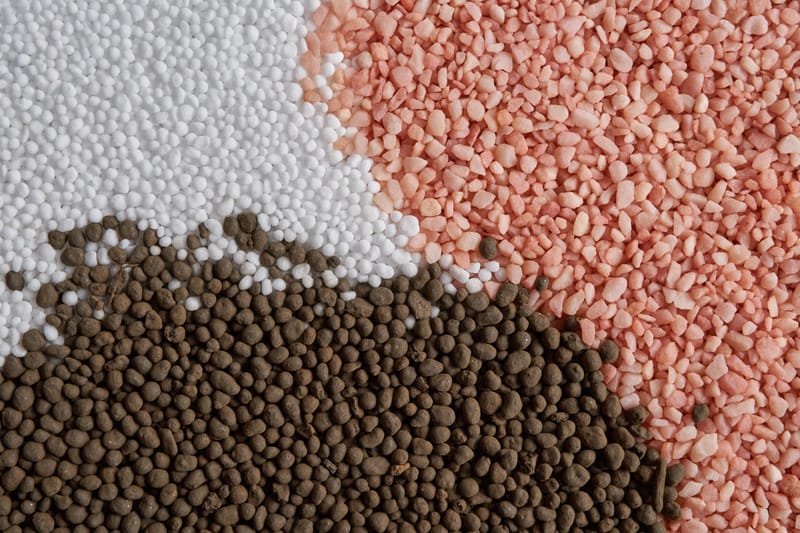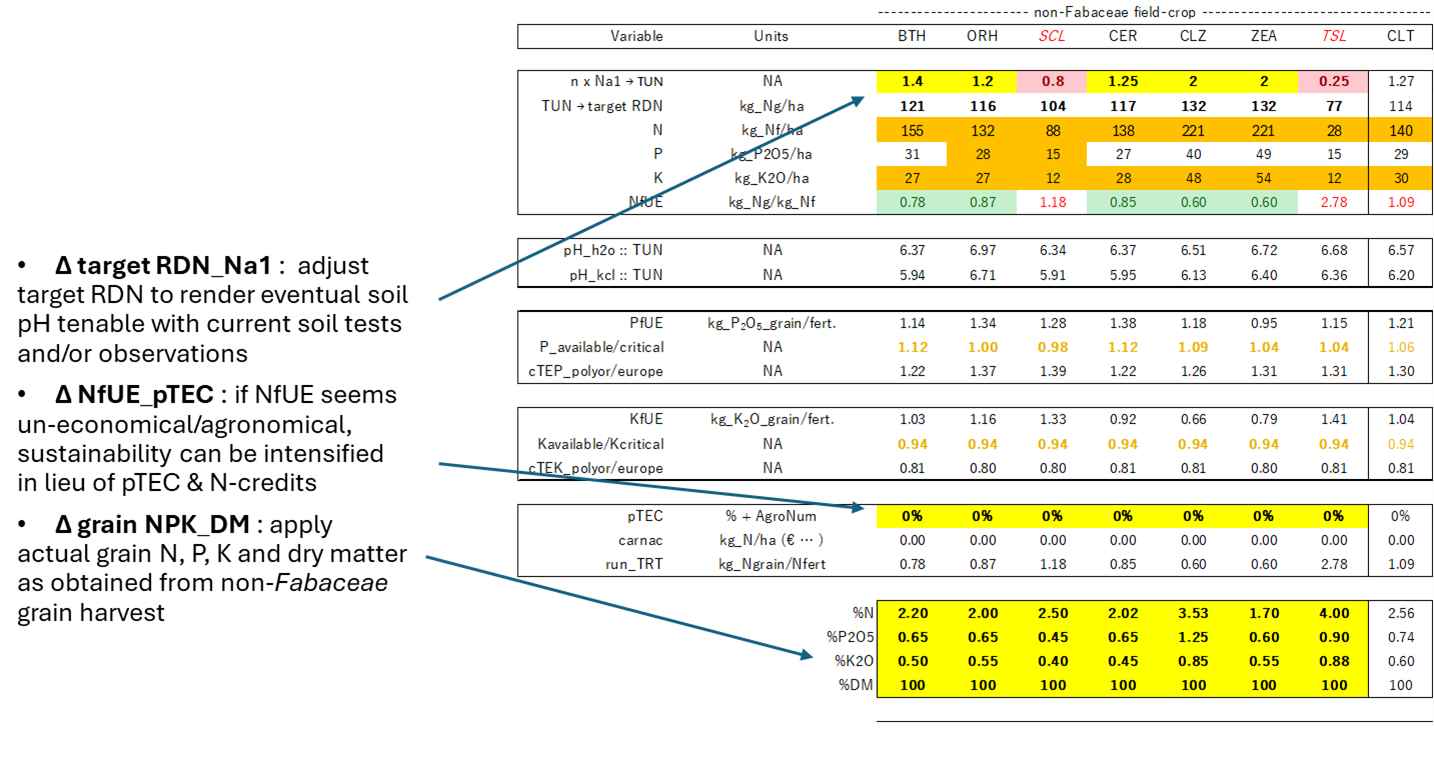
22 000 such AgroNum™ NMPs (nutrient management plans) have been generated across Europe. Rather than soil tests, the AgroNum reference soil P_Olsen, K_exchangeable, & pH_water&CaCl2 values are indicated. If soil tests are available, these will appear and can be compared to these reference values. GPS coordinates are approximately at the center of the farm or field so that AgroNum™ N-fertilizer responses are usually applicable to the whole farm.
In-field & in-season precision agriculture modulations of this NMP can then be done by the farmer/consultant. AgroNum is thus fully interoperable with precision agriculture (PA) technologies. More so, NMPs can be made more tenable, by making sure that P&K use efficiencies, resulting soil pH and soil P&K critical thresholds are commensurate with regulatory norms across Europe. This tenablility (sic) should make these disruptive, but sustainable, NMPs more acceptable to both farmers and legislators.
An example – one of 22 000, of AgroNum™ NMP here in France NUTS2 FRK2 after finetuning to make it more tenable to farmer, consultant & regulator. Notice that little or no bold red values appear as a result. Yellow highlighted items can be modified in the course of this finetuning. Brunish P & K recommendations are imperative since available soil P is below AgroNum™ generated thresholds, most of which are commensurate with existing European norms as estimated by Recena et al. 2022 and/or the Comifer. Given that for this site, environmental means as estimated by AgroNum™ AI algorithm are close to AgroNum™ sustainable means, pTEC is invoked sparingly as a means.

Farmers can interactively adjust RDN protein yield targets for the various non-Fabaceae grain bearing field crops (CLT) such as winter wheat (BTH), winter barley (ORH), rye (SCL), small grain cereals (CER), winter rapeseed (CLZ), grain corn (ZEA) or again sunflower (TSL). pTEC yield enhancing technologies can also be accounted for ; these can at times generate refundable N-credits in lieu of conventional soil-derived carbon credits. At harvest, grain N, P & K levels can be assessed to, either ascertain the degree of sustainability of the current cropping schedules, or again reset target grain NPK levels.


